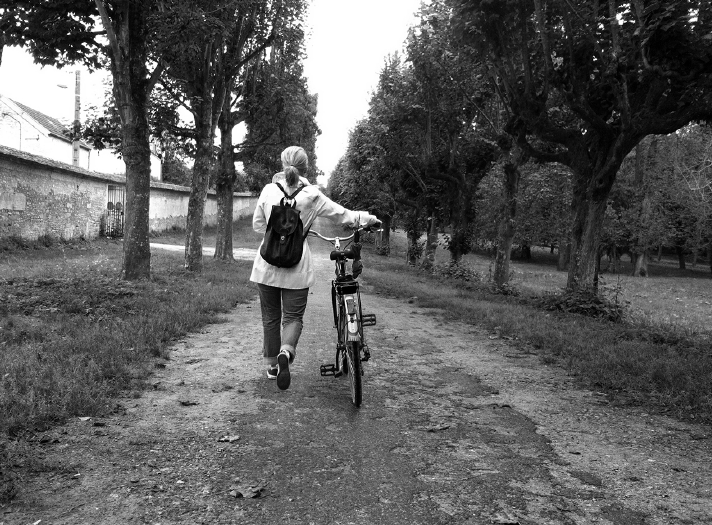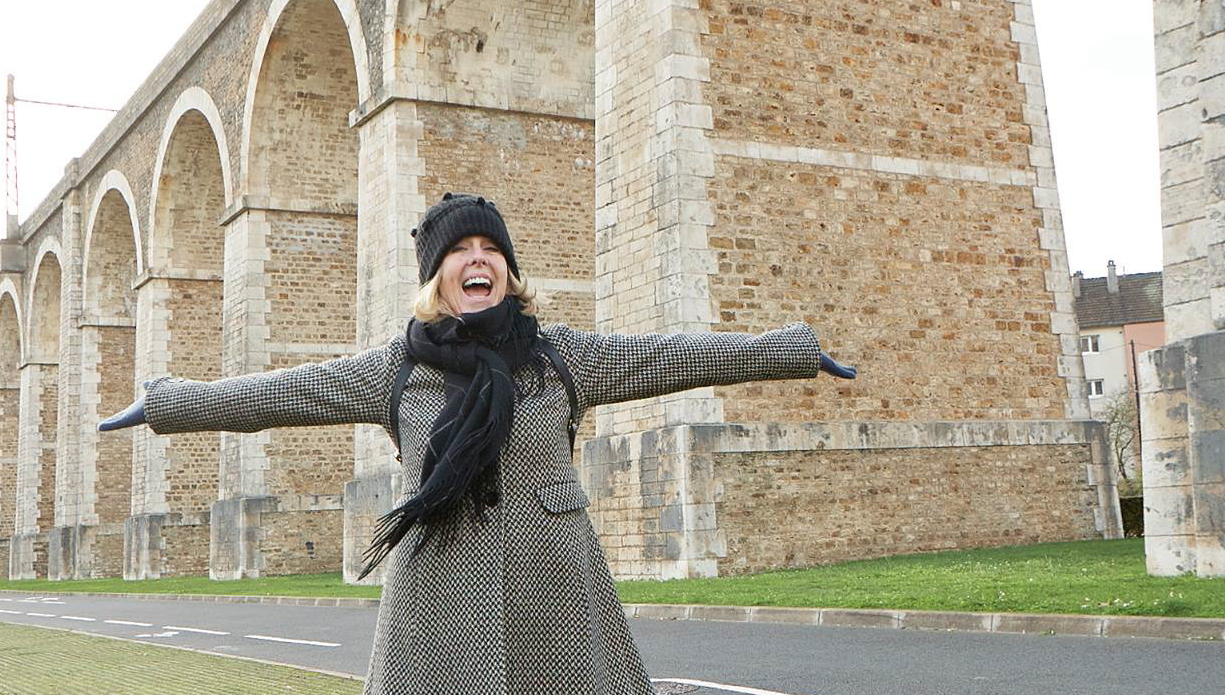By Joanne Gaget
April 2024
So how did I get lung cancer? Well, if you’re a lung cancer patient like me, I’m certain that this all too common question has played over and over in your mind as well; much like an endless repeat of a badly broken record (and yes, in light of today’s technology I am unabashedly dating myself here)! Walking back through the last six decades of my life, I reflected on the remarkable strength of my respiratory system and the fact that I never had a cough…except when I contracted the first variant of Covid in 2020. Oh and yes, there was that one time I had bronchitis due to an issue with mold. Moreover, I had always taken excellent care of my general health, staying fit and eating an exceptionally well, pesco-pollo vegetarian diet, in addition to long-held restrictions on processed, fast foods and sugar. So what gives?

Following my diagnosis, I came to understand that in general there is an assumption of guilt and shame that accompanies a diagnosis of lung cancer, especially for smokers and former smokers. But what about the never smokers? Why are they unceremoniously lumped into this mark of disgrace? Having dwelled in this self-sabotaging space as a former smoker, I too have put myself through these paces, questioning everything in a fruitless plight to identify exactly where I went wrong. I thought….
- Maybe it was my exposure to second hand smoke when I was a child in the 60s and 70s? Both of my parents were heavy smokers, delighting in their habit everywhere, in the car, in the house, in restaurants, everywhere! But neither of my parents developed lung cancer, nor any other form of cancer for that matter.
- Maybe it was because I smoked in my party girl days of late teens and early 20s? I smoked with my girl friends in the high school restroom stalls, then moved onto the smoky discotheques of the late 70s and early 80s, smoking happily without abandon. After quitting cold turkey at the age of 27, I was guilty of the occasional social cigarette at infrequent French soirees where smoking is still considered common place. So maybe it was the exposure to first and second hand smoke from many moons ago?
- But maybe it was the toxic landfill that I lived nearby in my 30s. On one sultry summer night in late August 1995, the local landfill erupted with fires from within its belly, breaking the surface and spewing forth toxic plumes of heavy smoke so thick I couldn’t see the neighbor’s house across the street. It was an unmitigated environmental disaster that also contaminated the soil and aquifer. Ever present in the air was a pungent odor from the hydrogen sulfide that mixed together with other odorless chemicals released in a toxic stew that caused chronic illnesses for so many of the residents within a five mile radius. Depending on which way the wind was blowing, my home was pummeled by these toxic plumes for over a year. But still, I never coughed. I was absolutely convinced I had lungs made of steel, which is why I took up the fight to close this landfill, once and for all. But that’s another story for another time!
- I went on to question…maybe it was the radon in the basement of another former home in Connecticut?

- Maybe it was the black soot that mysteriously clung to the surfaces of our apartment in a Manhattan pre-war, walk-up? Or maybe it was the billowing exhaust from idling automobiles and buses just outside the large open windows of our second floor Haussmann style apartment in Lyon, France?
- Maybe it came about from all the cortisol that coursed through my body from chronic stress that I wasn’t always successful in managing as a Type A personality?
- Maybe it’s all of the above. Or perhaps maybe…it’s just random occurrence.
My lung cancer journey began back in February 2021, by happenstance. I didn’t have any of the classic symptoms, other than I didn’t feel well and I was unusually tired. I reluctantly caved to a trip to the local emergency room for what appeared to be an abdominal hernia or aneurysm. The physician ordered an angio CT scan that revealed a lung mass in the upper lobe of my right lung, which lucky for me was not accompanied by a suspected aortic aneurysm. After many consultations and further testing, it was agreed that the first phase of my cancer treatment plan was to remove the upper right lobe using robotic assisted surgery.
Understanding the diagnosis
In determining staging, it is now customary to send the tumor specimen for additional testing of genetic mutations, as lung cancer can be managed for many patients with targeted therapy or immunotherapy, in addition to traditional chemotherapy and radiation. If you happen to come up positive as I did, it was said that this finding was like winning the lottery…although I must admit that I didn’t quite feel the sort of exuberance one might expect. However, I did feel that a bit of my Irish luck had come back my way, in the sense that I would be given yet another weapon in my arsenal. In reading and re-reading the pathology reports through a broad range of emotions, I came to better understand my diagnosis of non-small cell lung cancer, subtype adenocarcinoma with a positive EGFR (epidermal growth factor receptor) exon deletion 19 mutation. Patients, in particular females with this type of lung cancer, tend to have minimal or no smoking history and currently represents about 10-15% of lung cancers in the United States (although interesting is this subtype is significantly more prevalent in the Asian populations).
Since my cancer had spread to a lymph node and invaded the visceral pleura, my second phase of treatment was chemotherapy (4 rounds of Cisplatin/Carboplatin and Alimta), followed by the third phase of targeted therapy with the medication Tagrisso, a tablet taken daily for up to 3 years. I dove head first into reading and understanding all that I could get my hands on about my disease, which included all published works on many other genetic mutations and respective treatments related to lung cancer. What I learned more importantly is that lung cancer is the leading cancer killer of both men and women in the United States, causing more deaths each year than colon, breast and prostate cancers combined. Yet awareness of this fact is low, and lung cancer does not have nearly the resources, support and public empathy that many other diseases have. This is likely due in large part to the strong, pervasive stigma associated with lung cancer.
Moving beyond blame
Given all of my efforts in retracing time, place, behaviors and events, I now know that I will never come to understand precisely whether my cancer was the result of one cause or a combination of factors, including the genetic mutation. With that conclusion, I chose not to waste precious time beating myself up over my past personal choices or environmental circumstances that were beyond my control. In keeping with self-care, I chose to focus my energies on the big business of living in peace and gratitude with the finest human being I’ve ever known…my extraordinary husband Bruno, along with my strong faith in God, who mercifully guides my every step. In feeling enormously blessed by the love, support and connection to family, friends, healthcare providers, the staff at Ann’s Place and to those who travel alongside me or similarly, I remain committed to being a voice, no matter how small, in creating awareness wherever and whenever an opportunity arises. Like so many, I too once harbored ill-informed perceptions about the causations of lung cancer. But today, with the recent advances in treatment, this widespread cancer is not an immediate death sentence, nor should it be perceived as a well deserved punishment for every lung cancer patient in equal measure. Through compassion and education we can all do our part to banish the stigma against those most in need of our sincerest empathy regardless of smoking status, thus leaving painful and wrongful judgments forever a notion of the past.

